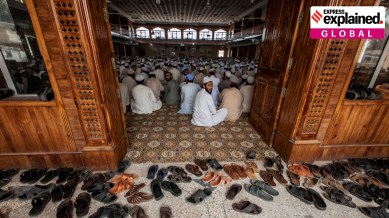Blast at Darul Uloom Haqqania: The story of Pak’s ‘University of Jihad’
Among those who died was Hamid ul Haq, the head of the school, which had been associated with the Taliban with several of its members, including the group's founder Mullah Omar, trained there

At least six people were killed in a suicide attack at an Islamic religious school in Pakistan that had been described as the “University of Jihad”. The explosion took place at the mosque within the Darul Uloom Haqqania, in the Khyber Pakhtunkhwa province.
Among those who died was Hamid ul Haq, the head of the school, which had been associated with the Taliban with several of its members, including the group’s founder Mullah Omar, trained there.
Here is a look at how Darul Uloom Haqqania came to be known as the “University of Jihad”.
The origin
Darul Uloom Haqqania is located in Akora Khattak, around 55 km from the northern city of Peshawar. It is home to roughly 4,000 students who are fed, clothed and educated for free.
The school was established in 1947 by Sheikh Abdul Haq, who had been educated at Darul Uloom Deoband seminary, situated in Deoband, India. This seminary, founded in 1866, was the place where the Deobandi movement began. The revivalist movement within Sunni Islam advocated for returning to the core principles of Islam.
After the partition of India, adherents of the Deobandi movement spread out across South Asia and set up seminaries, or madrassas, teaching an austere version of Islam — particularly along the Pakistan-Afghanistan border, where Abdul Haq established Darul Uloom Haqqania.
The school quickly became one of the region’s most renowned religious educational institutions and an important academic centre of the Deoband school of thought.
The transformation
However, Darul Uloom Haqqania did not begin to make headlines until the 1980s. After Abdul Haq’s death, his son, Sami ul Haq took charge of the seminary in 1988, and started to propagate the idea of jihad as a “compulsory undertaking on all Muslims of fighting age,” according to a report by TRT World.
Sami ul Haq essentially converted the school into training grounds for future Taliban leaders who would fight against the Soviet Union in Afghanistan.
“He took the idea of a personal struggle – that everyone is fighting an inner war and modified it with a focus on fighting the Soviets in Afghanistan,” said Zarghoun Shah, a correspondent for GEO News network, told TRT World.
Notably, both Pakistan and the United States used the school to recruit and nurture rebels who resisted the Soviet invasion of Afghanistan.
Among the most notable alumni of Darul Uloom Haqqania were Mullah Omar, founder of the Taliban, and Jalaluddin Haqqani, who established the Haqqani network — the Taliban’s military wing, responsible for hostage taking of Americans, complex suicide attacks and targeted assassinations. Asim Umar, who used to be the leader of al-Qaeda’s South Asia wing, was also taught at the school.
After the Soviet Union withdrew from Afghanistan, the seminary maintained its ties to Taliban leaders who took control of Kabul in the mid-1990s, according to a report by the Washington Post. “Later, after the United States helped oust the Taliban government from power in 2001, the seminary produced scores of insurgents,” who fought Afghanistan’s US-backed government, the report said.
For these reasons, Sami ul Haq came to be known as the “Father of Taliban”. After his assassination in 2018, his son, Hamid ul Haq, took over the seminary and was killed in the blast on Friday.